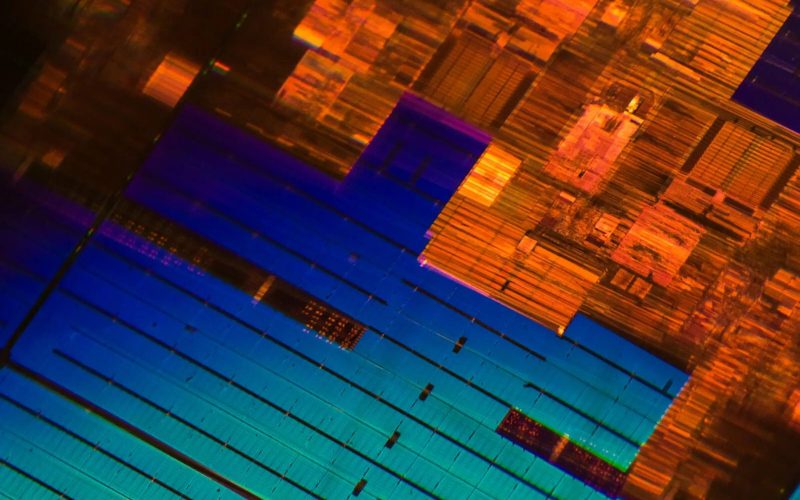by Nick Mersch, CFA, Portfolio Manager, Purpose Investments
Over the last couple of months, we’ve experienced several years of volatility, as we’ve seen some of the largest market cap swings in the stock market's history. On September 3rd, Nvidia lost $279B in market cap in one day. That one-day loss is larger than the market cap of Pepsi, Salesforce, T-Mobile, Mcdonald's, and Nvidia’s closest competitor, AMD.
But has the fundamental thesis changed over this time period? Not at all.
As I alluded to in my prior post, the fundamentals amongst major tech companies remain strong. Cloud growth is humming along, CapEx spending shows no signs of slowing, and although AI revenue recognition is arriving slowly, we are seeing encouraging adoption metrics.
There is a famous saying that in periods of volatility, stocks return to their rightful owners – those with longer time horizons.
But how long of a time horizon should you have?
One of the more popular graphics circulating this month showed annualized returns across holding periods.

The chart above shows that patience is a wise virtue when investing, and the odds of staying green are ever in your favour when extending your time horizon.
But a deadly error here is confusing patience with becoming a bystander. A patient investor can use selloffs to dollar-cost-average into high-conviction positions, while a bystander fails to interpret and receive net new information. Since my last post, we have received a significant amount of new information from Nvidia’s earnings report.
Nvidia’s Continued Dominance
Nvidia has been the poster child of the last two years surrounding the hype around the key market theme of AI. It has also been front and centre when it comes to volatility over the last two months. This makes it the most important stock in the market right now.
With Nvidia, we must be patient instead of bystanders. So, we must ask ourselves: Has the long-term thesis changed? If not, selloffs provide more attractive entry points.
Here is a summary of what I found to be the most important takeaways:
- Revenue growth strong: While not clearing the buy-side bars of massive beats and raises that investors have become accustomed to, revenue growth is still nothing short of phenomenal. What we have (for now) is a more regular cadence of growth.
- Blackwell delayed: This regular cadence could be disrupted by the delay in the next series. While management expects to ship “several billion dollars in Blackwell revenue” in Q4, this series is delayed from original expectations.
- Margin pressure incoming: The Blackwell delay is due to an issue with the GPU mask that caused a lower yield in the chipset. This and a pricing change at TSMC will lower gross margins over the short term.
Now for the so what? Behind the headlines.
The three things that will change the Nvidia narrative are revenue growth slowdown, margin compression due to competitive threats, and lack of RO“AI.”
Nvidia has fundamentally changed the industry. They've pushed the cadence of the next series to a ~2-year run cycle, which is making mega-caps pad their order books around the most efficient series every time it comes out. This cadence is an extremely impressive feat, and Nvidia’s CEO, Jensen Huang, is the only person who can have this level of production at this pace.
He can do this not because his individual GPU is better at training models than others. This is a supply chain problem even more than it is a technical one. We've seen some of the testing come back on chip startups like Groq, which has a language processing unit that shows superior technical capability on inferencing. But Jensen is selling a system, not just a chip. It's an entire racking system that you need to get exponential improvements in training and inference.
Jensen dominates the supply chain to the point where he is a bully. There was a massive semiconductor conference the other month called COMPUTEX, where Jensen was signing shirts. There was a picture of the CEO of Foxconn, an $80 billion dollar company in the chip space, waiting in line for one hour to get Jensen's autograph.
He has an absolute stranglehold on the entire supply chain right now. If you think a technical problem with his chip can’t be solved by pushing him through by sheer force, I think that’s the wrong bet.
Verdict: The revenue growth thesis is still intact.
The next concern that will dismantle the bull thesis is a viable competitor entering the space. The short-term dip in margins is coming from Blackwell rollout friction and TSMC pricing. It is not coming from competitors entering the space, which alters Nvidia’s pricing power. When other companies catch up, this will be a problem. But are they catching up?
Not really.

There is a reason that all of these companies are still massive customers of Nvidia while trying to develop in-house silicon. Nvidia is simply better. Until that changes, I don’t see this becoming an issue.
Verdict: Pricing power is still intact.
The third and probably most important issue is the market now questioning the return on all the CapEx spend. This concern has a new acronym: “Return on AI” – RO“AI.”
Many commentators are myopically focused on seeing AI revenue as a line item for this to make sense. However, while the SKU-separated AI revenue right now is only around $10-15B, the cost savings and “bundling” aspects of AI are starting to show just how much value this can bring.
One of my favourite recent headlines is one from Amazon CEO Andy Jassy about AWS efficiency gains. Jassy noted that Amazon Q, the company’s GenAI assistant, “… has saved us the equivalent of 4,500 developer-years of work (yes, that number is crazy but real).” This equates to approximately $260M in annualized efficiency gains, and we’re just getting started.
Verdict: RO“AI” is showing signs of life, but the jury is still out, and we need to see more.
Wrapping Up
While I see Nvidia's dominance continuing over the next 8-12 months, projecting beyond that is a fool's game. This is not a buy-and-hold forever company – none of them are. As Nvidia navigates these three critical components, I will continue to adapt and adjust to net new information.
In periods of volatility, there are usually agents of change present. Agents of change are healthy across every ecosystem and usher out the old to make way for the new. The nature of the stock markets and the companies within it are no exception. We are seeing this with the introduction of new stock market leadership – those directly involved with the proliferation of AI.
Strong convictions. Loosely held.
Nick Mersch, CFA
Get the latest tech insights to your inbox every month.
The content of this document is for informational purposes only and is not being provided in the context of an offering of any securities described herein, nor is it a recommendation or solicitation to buy, hold or sell any security. The information is not investment advice, nor is it tailored to the needs or circumstances of any investor. Information contained in this document is not, and under no circumstances is it to be construed as, an offering memorandum, prospectus, advertisement or public offering of securities. No securities commission or similar regulatory authority has reviewed this document, and any representation to the contrary is an offence. Information contained in this document is believed to be accurate and reliable; however, we cannot guarantee that it is complete or current at all times. The information provided is subject to change without notice.
Commissions, trailing commissions, management fees and expenses all may be associated with investment funds. Please read the prospectus before investing. If the securities are purchased or sold on a stock exchange, you may pay more or receive less than the current net asset value. Investment funds are not guaranteed, their values change frequently, and past performance may not be repeated. Certain statements in this document are forward-looking.
Forward-looking statements (“FLS”) are statements that are predictive in nature, depend on or refer to future events or conditions, or that include words such as “may,” “will,” “should,” “could,” “expect,” “anticipate,” intend,” “plan,” “believe,” “estimate” or other similar expressions. Statements that look forward in time or include anything other than historical information are subject to risks and uncertainties, and actual results, actions or events could differ materially from those set forth in the FLS. FLS are not guarantees of future performance and are, by their nature, based on numerous assumptions. Although the FLS contained in this document are based upon what Purpose Investments and the portfolio manager believe to be reasonable assumptions, Purpose Investments and the portfolio manager cannot assure that actual results will be consistent with these FLS. The reader is cautioned to consider the FLS carefully and not to place undue reliance on the FLS. Unless required by applicable law, it is not undertaken, and specifically disclaimed, that there is any intention or obligation to update or revise FLS, whether as a result of new information, future events or otherwise.
Copyright © Purpose Investments













